Access to Collaboration Site and Physics Results

Catching hadronic vector boson decays with a finer net
– Many theoretical models predict that new physics, which could provide answers to these questions, could manifest itself as yet-undiscovered massive particles. These include massive new particles that would decay to much lighter high-momentum electroweak bosons (W and Z). These in turn decay, and the most common signature would be pairs of highly collimated bundles of particles, known as jets.Read more →
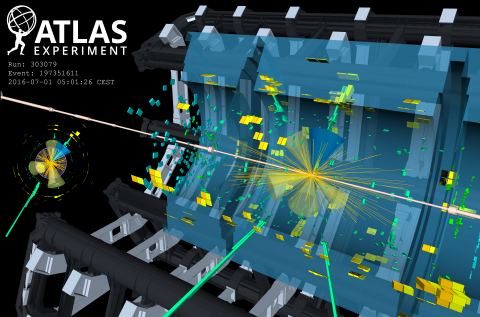
ATLAS observes direct interaction of Higgs boson with top quark
– The ATLAS Collaboration at CERN has announced the observation of Higgs bosons produced together with a top-quark pair. Observing this extremely rare process is a significant milestone for the field of High-Energy Physics. It allows physicists to test critical parameters of the Higgs mechanism in the Standard Model of particle physics.Read more →
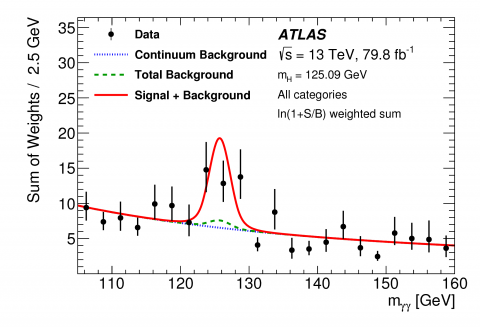
New ATLAS result establishes production of Higgs boson in association with top quarks
– According to the Standard Model, quarks, charged leptons, and W and Z bosons obtain their mass through interactions with the Higgs field, whose fluctuation gives rise to the Higgs boson. To test this theory, ATLAS takes high-precision measurements of the interactions between the Higgs boson and these particles. While experiments had observed and measured the Higgs boson decaying to pairs of W or Z bosons, photons or tau leptons, the Higgs coupling to quarks had – until now – not been observed.Read more →
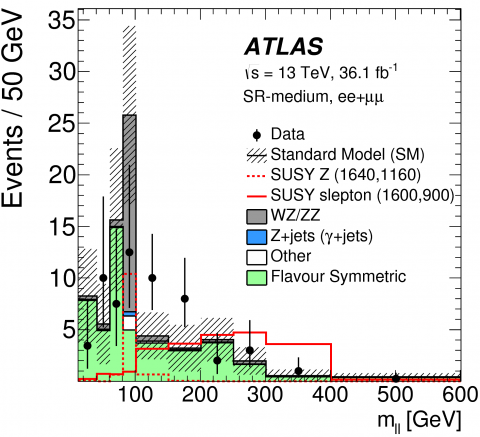
The edge of SUSY
– The ATLAS experiment has just completed a new search for evidence of supersymmetry (SUSY), a theory that predicts the existence of new “super-partner” particles, with different properties from their Standard Model counterparts. This search looks for SUSY particles decaying to produce two leptons and scrutinises the invariant mass distribution of these leptons, hoping to find a bump.Read more →
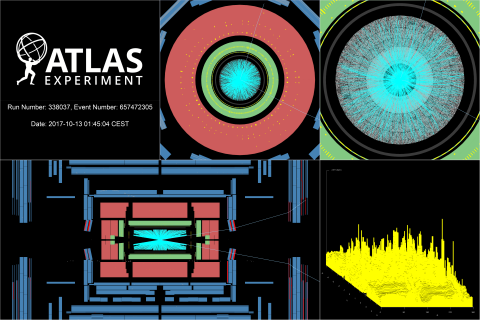
Noble collisions give new insights on heavy ion systems
– In October 2017, the ATLAS experiment recorded collisions of xenon nuclei for the first time. While massive compared to a proton, xenon nuclei are smaller than the lead ions typically collided in the LHC. The xenon-xenon collision data, combined with previous results from the analysis of lead-lead collisions, provide the first opportunity to examine heavy ion collisions in a system that is distinctly smaller in size. This allows physicists to study in detail the role of the collision geometry for observables often associated with the quark-gluon plasma.Read more →
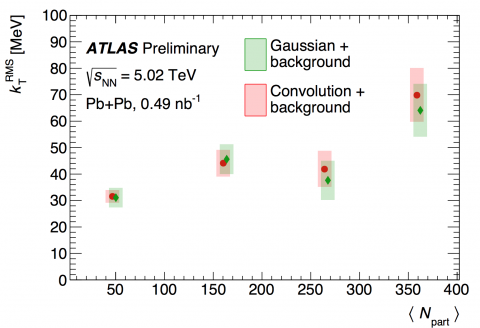
ATLAS studies the quark-gluon plasma using muon pairs produced by two photons
– Heavy ion collisions at the Large Hadron Collider (LHC) form a hot, dense medium called the quark-gluon plasma (QGP), in which the primary constituents are thought to be quarks and gluons produced in the initial interactions of the nuclei. Besides typical heavy ion collisions, where the nucleons in the colliding nuclei undergo multiple strong interactions with each other, there is also a class of “ultraperipheral” collisions. In these collisions, the nuclei are far enough apart to miss each other, but the surrounding electromagnetic field of one nucleus is able to interact both with the other nucleus (“photonuclear” interactions) and with the other electromagnetic field (“photon-photon” interactions).Read more →
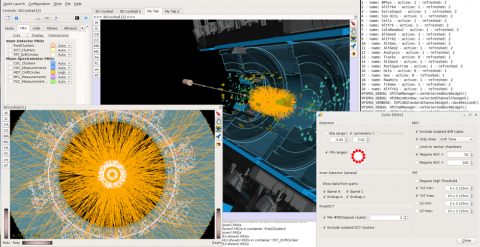
Waiting for physics: Stable beams!
– Following the first “beam splash” tests in early-April, the ATLAS experiment awaited the next milestone on the road to data-taking: "stable beams". This is when the LHC proton beams are aligned, squeezed, focused and finally steered to collide head-to-head. It is an important test, as it allows us to verify that the collision mechanism is ready to take data that are good for physics studies.Read more →

Waiting for physics: Splashing beams
– Each year, around mid-spring, the giant LHC accelerator wakes up from its winter maintenance and gets ready for a new feverish period of data taking. But before smashing protons once again, some tests have to be done, to check that everything is in order and that the machine can accelerate and collide particles properly, as it did before the shutdown.Read more →
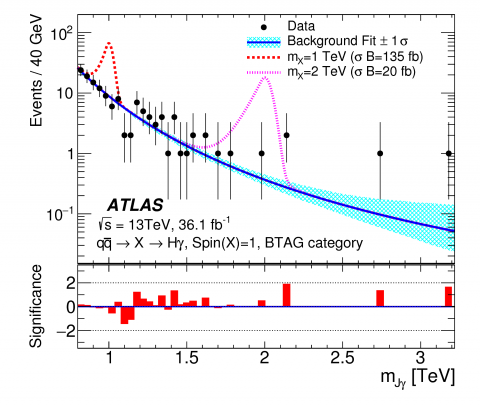
Searching for forces beyond the Standard Model
– The ATLAS collaboration is continuing to scour the wealth of data provided by the LHC for any signs of physics beyond the particles and interactions described by the Standard Model. One approach is to search for new forces in addition to the Standard Model’s electroweak and strong interactions. Such forces could be propagated by new massive bosons playing the role the W and Z bosons have in mediating the electroweak force.Read more →
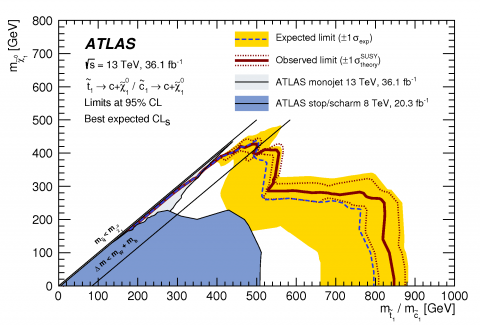
Charming SUSY: running out of places to hide
– Why is gravity so much weaker than the other forces of nature? This fundamental discrepancy, known as the “hierarchy problem”, has long been a source of puzzlement. Since the discovery of a scalar particle, the Higgs boson, with a mass of 125 GeV near that of the W and Z bosons mediating the weak force, the hierarchy problem is more acute than ever.Read more →




